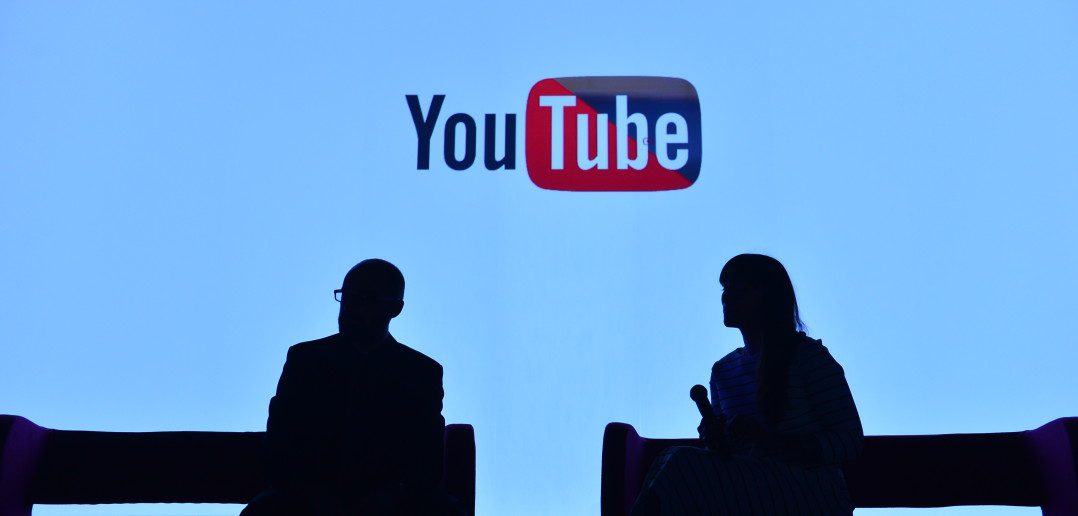As MIPTV 2015 drew to a close last week, it became clear that the gap pointed out by many media analysts between « traditional » TV and internet content isn’t as wide as they thought. The succession of panels and keynotes in the Cannes Palais showed quite the opposite – an increasing interconnection between all kinds of screens, content and stars. The thing is, in a TV/entertainment industry without borders, how can these – sometimes very new – media companies thrive?
Like last year, answers were given by the multi-channel networks (MCNs) present at MIP Digital Fronts, MIPTV’s international digital content marketplace. Invited to showcase their best talent and share their views of the content industry’s future, the CEOs and creative directors kept reminding the audience that millennials’ behaviour is the one reason the industry has to change, both in terms of formats and accessibility. Maker Studios’ international president René Rechtman quoted some figures to illustrate his point (watch the full session below). Did you know, for instance, that short-form online video is consumed by 62% of generation Y, whereas traditional long-form is only consumed by 38% of these young viewers? And there’s more: they watch three times more online video than non-Millennials!
So how do MCNs remain relevant? As Rechtman pointed out, « talent travels between platforms and works where the audience is.” So is becoming platform-agnostic the key? VICE’s global head of content Alex Miller – who also took to the stage at MIP Digital Fronts – couldn’t agree more: « The only thing that matters is storytelling. The only thing that matters is good content, » he repeated, pointing out the urging need to focus on quality rather than platforms.
As an example, he mentioned VICE’s recent focus on mobile content, facilitated by the company’s past experience: “We’re going to be taking everything we’ve learned from news moving from online to TV to mobile, and we’re going to be doing it for every single one of our channels.” To further prove that their ambition knows no limits, chief creative officer Eddy Moretti gave the audience a glimpse of things to come: VICE’s next target is the big screen, with two feature films planned per year for the next three years.
If there is a gap, it is between the viewers themselves: during AwesomenessTV’s showcase, CEO Brian Robbins boldly declared that « traditional TV viewing for teens and tweens is dead – not dying, dead. » He further warned the MIP Digital Fronts audience against focusing on generation Y only: “Generation Z (those born from the mid-90s) will be way more influential than millennials. Pay attention to generation Z. It’ll ensure that your company and brand will be setting the trends, not reacting to them.” More influential on their peers and more mobile than any generation before: these two characteristics will undoubtedly be key to target future media consumers.
In this increasingly fast-moving and dangerous « TV » world, innovation isn’t just a way to attract younger audience: it must be at the core of any digital video strategy – and this is where MCNs have a big role to play in the industry as a whole, according to Michael Shamberg. The producer behind Pulp Fiction and Erin Brockovich now helps BuzzFeed create traditional story-based or character-based content, and he sees the internet company as « a big R&D lab. » At the other of the spectrum, “the studios don’t have the capacity to innovate at all, because the amount of capital is so large, and they move so slowly,” he explained, in his keynote session with Buzzfeed Motion Pictures’ Ze Frank (watch in full here).
In other words, in today’s media landscape, it’s all about being agile and addressing your audience with original and customised content – not to mention the necessity to get that audience’s feedback and exchange with these viewers. Rooster Teeth’s creative director Burnie Burns insisted on his MCN’s experience in this field: their productions wouldn’t be nearly as successful without such a passionate fan base.
Where do advertising agencies and brands fit into this ocean of content? Havas’ chairman and chief executive Yannick Bolloré shared his views on his company’s future, stressing the tremendous changes advertising people face when it comes to delivering « the right type of content to the right type of person on the right device at the right time of day. » The answer is – again – flexibility, even if it means redifining Havas’ very mission: « This is not an agency, this is not a production company: it is clearly a mix. We call it a production agency, » he explained.
On the brand side, originality and creativity are rewarded as well: Marriott was presented with the MIPTV Brand of the Year Award for its new content strategy, developed by a studio opened about six months ago. Marriott’s move epitomises the current wave of branded content: quality productions that help brands remain relevant and attract new, potential clients – another form of flexibility, in a way. So far, it’s a winning strategy: Marriott’s first short Two Bellmen (below), generated over five million views online. Watch it here:
Last but not least, TV comedies and dramas themselves try to reach a similar kind of flexibility, right from their production process. Even in scripted fiction, lines are often blurred, as Modern Family’s co-creator and executive producer Steven Levitan revealed: “We just wanna capture the comedy in the most spontaneous way possible, and that happens best early on, not after the 30th take.”
Is spontaneity the key to remaining relevant on « traditional » TV too? The same goes for new TV formats analysed by TheWit’s Virginia Mouseler, characterised this year by less interactivity and more authenticity than before, as Practival Innovation’s Daniel Ravner pointed out in MIPTV’s Trending Topics session: « TV, when it’s not busy trying to get on Twitter, does really well. It can tell us something about ourselves and where we are socially.”
Flexibility, authenticity, spontaneity: the mandatory skills to survive in TV nowadays? They can at least help you stand out in what Yannick Bolloré calls the « wall of infinity: » “10 years ago it was possible to see everything… We have shifted to a wall of infinity. It is impossible today to have this erudition about the content… And it is clearly a fascinating disruption.” The best illustration of this overabundance of content was probably given by Vsauce’s Michael Stevens, who talked about YouTube’s current scale: “Every single minute, there are 10 more days to watch. You couldn’t watch all of it in a lifetime,” he said.
Surviving infinity can be a exciting challenge, though. Sky’s CEO Jeremy Darroch goes even further: « There’s never been a better time to be in the industry that we’re in, » he said. « The demand from customers for great content seems to be insatiable… They want to have access to that, as we know, on their terms. They want the whole experience of watching television to be better. »
If surviving the infinity of content means making better television, then the TV industry still has a bright future ahead!
Missed anything from MIPTV, MIP Digital Fronts, MIPDoc or MIPFormats? Full and clipped conference videos, liveblog reports, photos and more are all online here. See you next time!
Top photo credit: S. d’HALLOY / IMAGE & CO




